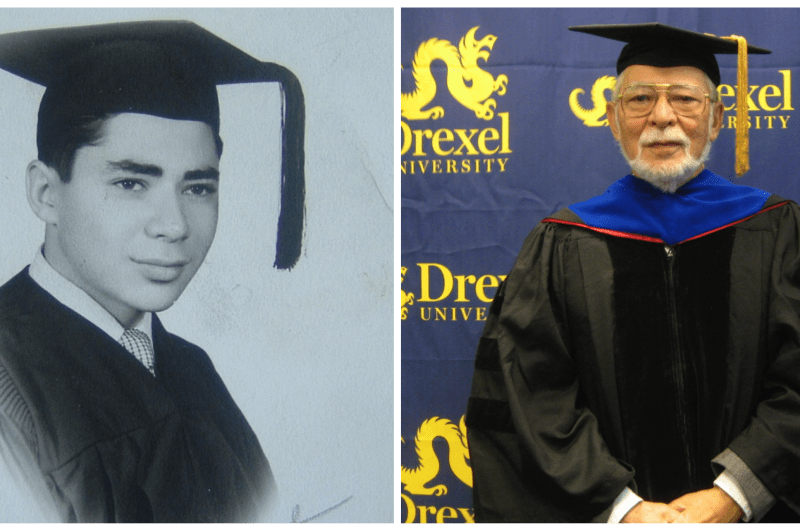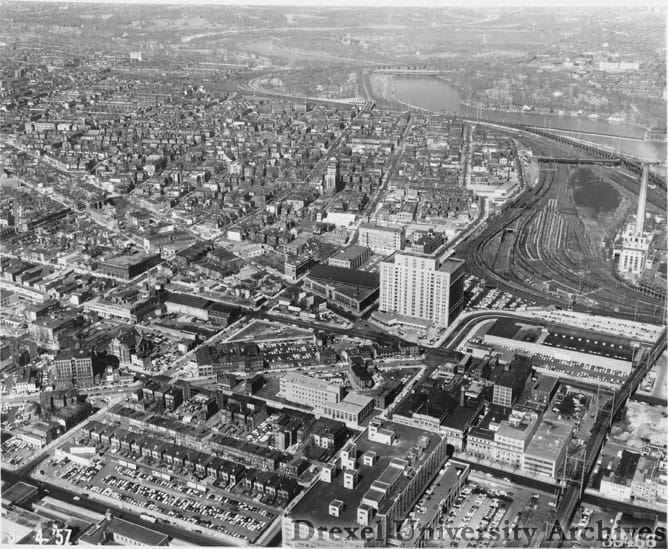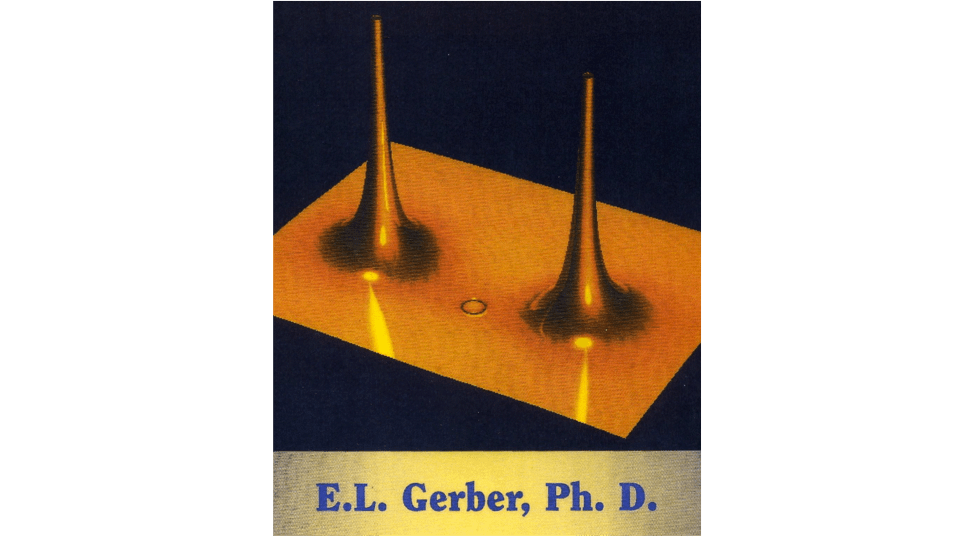Drexel Memories From the Professor Who Has Been Here for Six Decades

This article is part of the DrexelNow “Faces of Drexel” series honoring Drexel’s history as part of the Universitywide celebration of the 125th anniversary of Drexel’s founding in 1891.
Drexel’s longest-serving employee is Edwin E.L. Gerber, PhD, professor in the Electrical and Computer Engineering Department in the College of Engineering. Gerber has been at the University for more than half of its lifetime, having first arrived on campus as a freshman in 1953 and starting his 59-year teaching career here immediately after graduating in 1957. In honor of Drexel’s 125th anniversary, he shared with DrexelNow his memories of being a Drexel student and faculty member.
His Student Days
As a young child, I was always playing with electrical toys, so I knew in high school that I wanted to study electrical engineering. I decided to go to the Drexel Institute of Technology (DIT), mainly because of the co-op program and Drexel’s engineering reputation.
I started in the winter of 1953 as a “February Freshman.” In those days, Philly schools had two graduations: one in June and one in January. Drexel offered a special starting term in February — it was only six weeks long but covered ten weeks of classes! We were told, “Look to either side of you. Only one of you will complete the first term.” The prediction was right!
To give you a feel for the time, tuition in 1953 was only $300 a term. I bought my first textbook, used, for only $3.50 — it was for calculus and I still have it. One practice that Drexel had long ago was that there were no classes of any kind from 1–1:30 p.m. That gave us a forced half-hour break every day!

Starting as a Professor
The Drexel Co-op program helped me make my career choice: I knew I did not want to punch a clock every morning and afternoon. Instead of looking for a job in industry when I graduated in 1957, I accepted a teaching position as an instructor in the Electrical Engineering Department (which was accredited in 1936). My salary was $4,000 a year. As a faculty member, I completed a master’s degree in physics at Drexel at no cost. I later received my PhD in electrical engineering from the University of Pennsylvania.
I was assigned a 12-hour teaching load and developed a new electronics lab. I started by changing our electronics lab from a vacuum tube into a solid-state electronics (transistors) lab. In the first few years I taught basic electronics and electric circuits courses. I have taught over 25 different undergraduate and graduate courses over the years and have been developing electronic lab courses for many years.
Drexel on Nov. 22, 1963
Late in the afternoon on Nov. 22, 1963, I was walking down the white marble steps in the Great Court when someone walked by me and said that the president was shot and died. I immediately thought it was [Drexel] President [William W.] Hagerty. Later in the day, I learned it was President John F. Kennedy. I will never forget that day on those steps.

Drexel and Computers
In 1980, I received a $10,000 National Science Foundation grant to develop an undergraduate lab course utilizing personal computers to perform computerized lab experiments. What had taken the students over an hour to perform then could now be done in less than a minute. I later learned that it was the first undergraduate computer lab in the United States, if not the world.
A new computer program, MAPLE, came out around that time. It was capable of solving and plotting most equations used in this course, so I decided write a book describing the use of MAPLE. In 1995, I had a six-month sabbatical leave that allowed me to complete the book “MAPLE for Electric Circuits and Systems.”
President Hagerty, in an effort to introduce modern technology to the University, announced that personal microcomputers would be mandatory for every newly enrolled freshman in 1983-1984. The students were able to purchase the Mac on campus for $1,000 and it came with a blue “D” on the front.
With my colleague Tom Moore, a fellow Drexel alumnus-turned-professor, I developed an interactive teaching program used to help students solve electric circuit problems. When the user (a student) answered incorrectly, the computer gave an appropriate response. I later used the Mac Paint program to create professional looking electric circuit diagrams that I used in my electric circuits and lab courses.
How the Campus has Changed
When I came to DIT, we only used four buildings: Main Building, Curtis Hall, Randell Hall and Alumni Engineering Labs. Today there are more than 50 buildings on the University City Campus. In recent years, two LeBow buildings have gone up (the Bennett LeBow Engineering Center and Geri C. LeBow Hall. Bennett S. LeBow was a fellow electrical engineering student on campus when I was a student. In 1953, the DIT library was located in the southwest corner of the Great Court. It was later moved to what is now the Korman Building before it found a home in the W.W. Hagerty Library. The men’s gym was located on the third floor of Curtis, where classrooms 341-344 are now.
The basement of Curtis (049) was the Electric Power Lab, now called the Center for Electric Power Engineering. Drexel has had a complete electrical power lab for more than 100 years and it’s one of the best power labs of this type in the country.

Awards
I have received several teaching awards at Drexel: M.N. Kaplan Distinguished Faculty Award in 1993 for service to the Electrical Engineering Department, Samuel Mercer Award for Distinguished Instruction in Continuing Education in 1994, Thomas W. Moore Teaching Award in 1995 and Senior Faculty Teaching Achievement Award in 1998. In February 2009, I was awarded a “Lifetime Achievement Award” from the College of Engineering.
In 2013, I received the Harold Myers Service Award, which was a true honor because I knew President Myers when I was a student and respected him for the true gentleman and scholar that he was. That same year I was also named one of the University’s most distinguished alumni with my induction into the Drexel 100.
At my 50th reunion, on May 5, 2007, I was asked to present the Alumni Association gift, a check for $643,845, to President Constantine Papadakis.
While it’s wonderful to be honored in these ways, I am only doing what I feel is right — supporting the University that has been a second “home” to me and given me a rich and rewarding career. I have had the greatest pleasure working and collaborating with my colleagues and department leaders over these many years. Those are the reasons why I never left Drexel.
In This Article
Drexel News is produced by
University Marketing and Communications.

